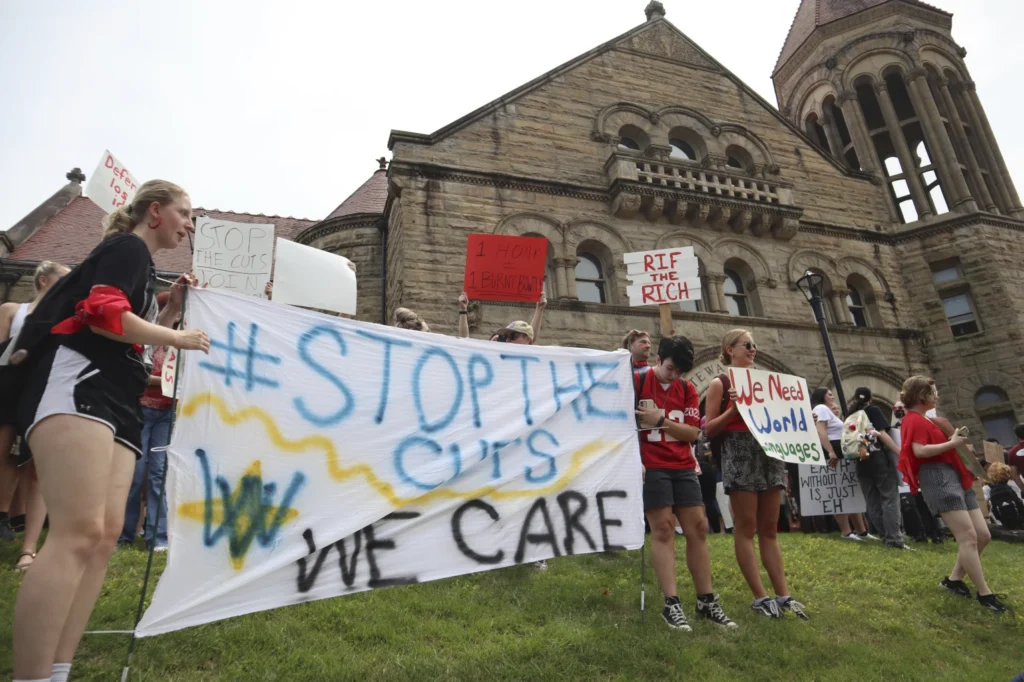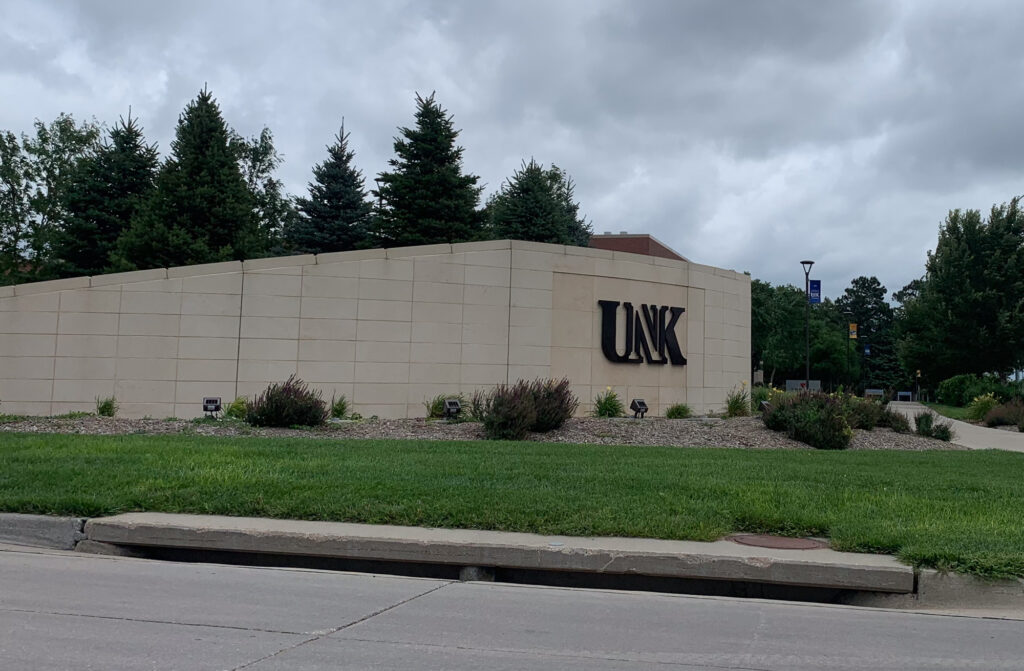Schools feel the pressures of politics, economics and demographics

West Virginia University made national headlines in September when its board agreed to cut 28 academic majors (8%) and 143 faculty positions (5%). One-third of education department faculty and the entire world language department will be eliminated, according to the Associated Press.
And those trims come atop cuts made last June, when the board approved slashing 132 positions and cutting 12 graduate and doctorate programs, even while okaying a 3% tuition hike. Impassioned protests notwithstanding, the school will be a smaller place going forward and not only in terms of the 10% enrollment drop it has sustained since 2015.
Like so many other such institutions, WVU is caught in a vise that seems to make the move mandatory: declining enrollment on the demand side and deep trims in state funding on supply side. The cuts fell heavily in liberal arts, as university president E. Gordon Gee said the school needed to refocus to meet job requirements in the future. His argument: “aligning majors with future careers is a necessity in today’s world.”
This is a familiar tune that, sadly, is being replayed all over the country. Four-year state-funded schools are being squeezed on the one side by legislatures keen to cut taxes and on the other by enrollment declines driven by demographics and high tuitions and costs. Such high tabs for students often make two-year schools more attractive.
In Nebraska, for instance, the four-campus university system faces an estimated $58 million shortfall by the end of the 2024-25 fiscal year, “a gap brought on by inflation, muted revenue growth and enrollment declines,” as a report from the university’s Omaha campus explained. Times are tough for Huskers both on and off the football field.

While officials will step up recruitment to try to boost enrollments, program cuts seem inevitable. According to the Nebraska Examiner, administrators at the university’s Kearney campus have proposed to cut 30 faculty jobs in 14 departments, eliminating the departments of geography, philosophy and theater and killing degree programs in areas including journalism and some languages. So far, it’s not clear what cuts are planned for the flagship campus in Lincoln or in Omaha.
Private schools are feeling the pressure, too. Marymount University, a small Catholic school in northern Virginia, is phasing out majors in English, history and several other areas where student demand has lagged, for example. As The Washington Post reported, art, mathematics, philosophy, secondary education, sociology, and theology and religious studies all are being chopped, along with a master’s program in English and the humanities.
Indeed, some institutions have had to close altogether. The King’s College, a Christian liberal arts school located a block from the New York Stock Exchange, this year laid off its entire faculty and halted classes after a couple years of tumult, for instance. Even support from the DeVos family (famous for former Education Secretary Betsy DeVos) couldn’t spare it from what administrators hope will be a temporary closure. To read more about it, check out the richly detailed report by journalism students there, “Inside Story of The King’s College Death Spiral of 2023.”
Distressingly, permanent school shutdowns have become common. According to the National Center for Education Statistics, 296 four-year schools closed between the 2015-16 academic year and 2020-21, the most recent year with data available. That compares with just 32 in the prior five-year period. And in the latest half-decade stretch these closures included 71 nonprofit institutions, up from just 16 in the prior period, along with a bevy of for-profit schools. The situation has grown so worrisome nationally that U.S. News & World Report published a piece in 2021 counseling students on what to do if their schools shuttered.
Certainly, particular pressures on the for-profit schools account for most of the shutdowns, which included 224 such four-year schools in the latest five-year period. Headlines about so-called “predatory” institutions have hit them hard, and deservedly so. Indeed, only three four-year public universities or colleges have been forced to close since 2010-11.

Nonetheless, program trims seem all too common among both state and private schools, and they appear to be accelerating. Inside Higher Ed just reported on such cuts at the 150-year-old Christian Brothers University in Tennessee, which plans to “reallocate” its programs; at Delta State University in Mississippi, where a 48% decline in enrollment over the last 15 years is leading to plans to slash the annual $51 million budget to $40 million; and at Miami University of Ohio, which has told faculty members in 17 academic departments that they must merge, reorganize or close. The publication details still other schools in similar straits.
From a hard-headed economic viewpoint, many such retrenchments seem necessary. In the non-academic world, when demand for a product or service slows or disappears, companies drop the lines and often furlough people. Plant closings are not uncommon. So, why shouldn’t higher education behave in the same way? To keep their product lines – i.e., academic offerings – fresh, they should be able to shrink or eliminate some, and to grow others.
Indeed, one could argue that more such flexibility at universities would force them to innovate more to serve changing needs. On an individual level, professors would be required to update their curricula to keep up with the times (something we in journalism have had to do regularly as our industry changed). Even profs teaching, say, classics, history or literature would need to adapt to make their course offerings relevant to the lives of students as their lives, mores and challenges changed. Few if any teachers could simply recycle the lectures they’ve long used.
But in so many ways higher education doesn’t operate like the business world – and that’s mostly a good thing. Tenure, for instance, protects faculty members’ ability to speak and teach as they see fit (not as administrators or, worse, politicians, would dictate — Florida notwithstanding). On the flip side, state funding is notoriously subject to the whims of politicians, many of whom lately seem to be ratcheting up longstanding attacks on academia and who are all too glad to cut budgets.
Moreover, higher education in the United States long has been a magnet for foreign students. Schools in relatively few nations can match American university training, so much so that such education is one of the nation’s biggest service “exports.” That has been changing in recent years, due to Covid and the growth of solid programs in some other countries. Indeed, enrollment of foreign students peaked in the 2018-19 school year at 1.1 million, according to National Public Radio.
Happily, such enrollment seems to be clawing its way back, even as it remains prey to everything from geopolitics to fears of crime and concerns about immigration. China, for instance, has been the largest source of foreign-student enrollment and uncertainties abound about whether Chinese students will return in large numbers.
The bottom line, however, is that after decades of expansion it seems that higher education is hardly a growth industry overall anymore. Until and unless the numbers of high school students rebound and the political climates in varous states change, and until and unless universities can figure out how to deliver more for less money, dark clouds will hang over much of the sector. Painful as it is, the current shakeout seems like an unavoidable and in some ways necessary rebalancing.
